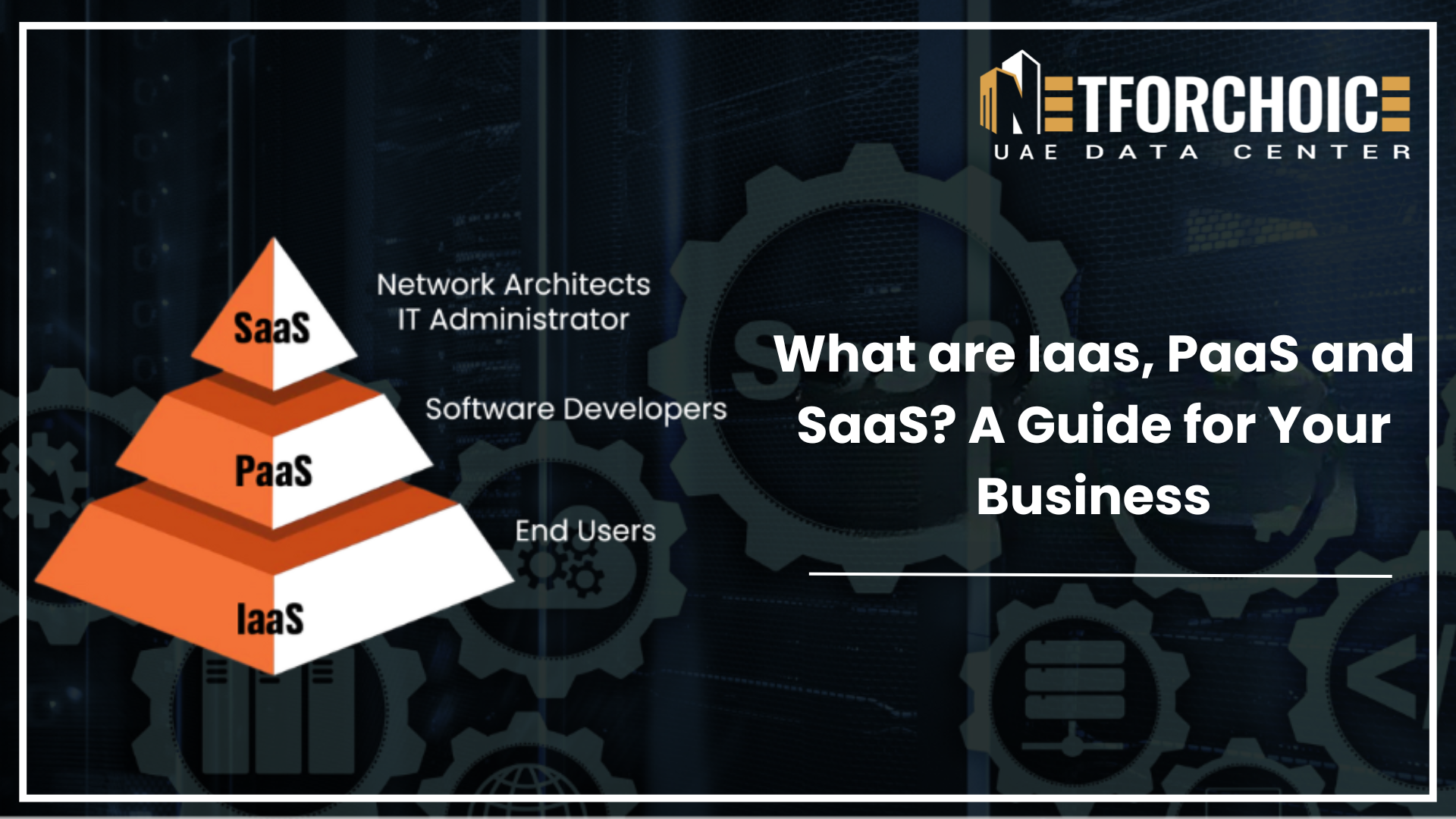As companies are increasingly moving to the cloud, it is important to understand the vital models of cloud computing. Commonly used models include Infrastructure as a Service (IaaS), Platform as a Service (PaaS), and Software as a Service (SaaS). These three service models offer different levels of control, flexibility, and management to suit different business requirements. Let’s analyze each of the models and help you determine the right cloud services for your business.
What is Infrastructure as a Service (IaaS)?
Infrastructure as a Service (IaaS) is the important layer of cloud computing which offers virtualized computing resources, such as servers, storage, and networking components, over the Internet. With IaaS, businesses can rent IT infrastructure from a cloud provider, like NetForChoice, on a pay-as-you-go basis, rather than investing in costly on-premises hardware.
Primary Benefits of IaaS
- IaaS easily increases infrastructure up or down based on the demand of your workload.
- It’s only pay-for-what-you-use, thus removing upfront capital expenditure.
- NetForChoice offers data centers with advanced physical and cybersecurity measures.
- IaaS assures business continuity with disaster recovery and failover capabilities.
- Put your infrastructure closer to users, reduce latency and increase application performance.
Common Use Cases for IaaS
- Hosting applications and websites.
- Data protection and recovery
- Test and development environments
- High-level computing
- Disaster recovery options
Businesses that use IaaS gain control over their infrastructure while assigning maintenance and management to a trustworthy supplier like NetForChoice.
What is Platform as a Service (PaaS)?
Platform as a Service (PaaS) provides a comprehensive expansion and deployment environment in the cloud. It offers the infrastructure, middleware, advanced tools, database management systems, and more. These are all managed by the service provider.
With PaaS, developers can focus solely on writing code and building applications without worrying about managing servers, operating systems, or storage.
Key Benefits of PaaS
- PaaS quickly develops, tests, and deploys applications.
- This eliminates the need to manage infrastructure and software updates.
- Teams can collaborate smoothly across locations using centralized platforms.
- This access integrated development tools, APIs, and analytics for faster innovation.
- PaaS easily increases your applications as user demand increases.
Common Use Cases for PaaS
-
- Building mobile and web applications
- API development and management
- Cloud-native application development
- DevOps and CI/CD pipelines
- Internet of Things (IoT) application development
With NetForChoice’s PaaS offerings, developers and IT teams get the agility they need to innovate faster while reducing time to market and operational overhead.
What is Software as a Service (SaaS)?
Software as a Service (SaaS) is the most commonly used cloud model, delivering ready-to-use software applications over the internet. The applications are managed and hosted by the provider, permitting users to access them via web browsers without installation or maintenance needs.
Examples of SaaS which includes email services, customer relationship management (CRM), collaboration tools, and office ingenuity applications.
Key Benefits of SaaS
- Use applications from any device with an internet connection.
- No need for hardware or software installations—just subscribe and use.
- Stay updated with the latest features and security patches.
- NetForChoice assures data encryption, secure access, and compliance with industry standards.
Common Use Cases for SaaS
- Email and communication (e.g., NFC Mail)
- Project and workflow management (e.g., Trello, Asana)
- Marketing and sales tools (e.g., CRM systems)
- Office and productivity suites (e.g., Google Workspace alternatives)
- Data backup and recovery solutions
NetForChoice provides a wide array of SaaS products to simplify operations, increase productivity, and empower businesses of all sizes.
Comparing IaaS, PaaS, and SaaS
Each model has its strengths depending on business needs. While IaaS provides maximum flexibility and control, PaaS simplifies development, and SaaS offers ease of use and rapid deployment.
Choosing the Right Cloud Services for Your Business
When selecting a cloud service model, consider the following factors:
- Your Technical Capabilities: Do you have in-house IT staff or developers?
- Business Goals: Are you building custom applications or simply looking to improve team productivity?
- Budget Constraints: Do you want to avoid upfront costs or ongoing maintenance?
- Scalability Needs: Will your infrastructure or software needs grow rapidly?
Often, businesses benefit from a hybrid approach—using SaaS for everyday applications, PaaS for development, and IaaS for hosting and infrastructure management.
At NetForChoice, we provide tailored cloud solutions that align with your business objectives. Whether you need data backup and recovery, application development platforms, or software tools to boost productivity, our IaaS, PaaS, and SaaS offerings deliver secure, scalable, and reliable performance.
Conclusion
Knowing the distinctions between IaaS, PaaS, and SaaS is vital for leveraging cloud services for your business effectively. Each model provides unique advantages—from infrastructure flexibility and quick application development to seamless software access.
By partnering with a trusted provider like NetForChoice, you can unlock the full potential of cloud computing and future-proof your business operations.
Ready to embrace the cloud? Explore NetForChoice’s full suite of cloud services today and take your business to new heights.
